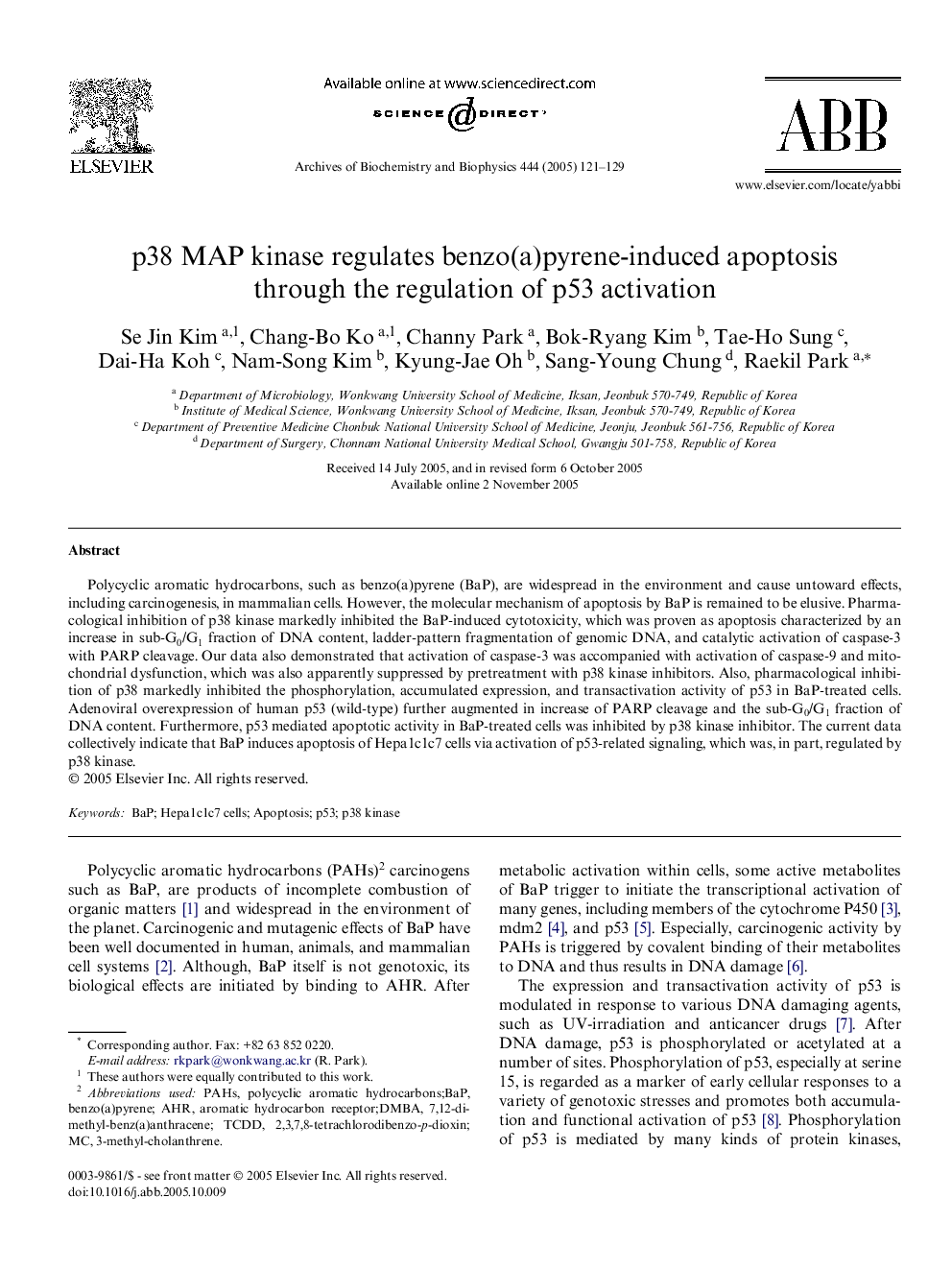| Article ID | Journal | Published Year | Pages | File Type |
|---|---|---|---|---|
| 9882063 | Archives of Biochemistry and Biophysics | 2005 | 9 Pages |
Abstract
Polycyclic aromatic hydrocarbons, such as benzo(a)pyrene (BaP), are widespread in the environment and cause untoward effects, including carcinogenesis, in mammalian cells. However, the molecular mechanism of apoptosis by BaP is remained to be elusive. Pharmacological inhibition of p38 kinase markedly inhibited the BaP-induced cytotoxicity, which was proven as apoptosis characterized by an increase in sub-G0/G1 fraction of DNA content, ladder-pattern fragmentation of genomic DNA, and catalytic activation of caspase-3 with PARP cleavage. Our data also demonstrated that activation of caspase-3 was accompanied with activation of caspase-9 and mitochondrial dysfunction, which was also apparently suppressed by pretreatment with p38 kinase inhibitors. Also, pharmacological inhibition of p38 markedly inhibited the phosphorylation, accumulated expression, and transactivation activity of p53 in BaP-treated cells. Adenoviral overexpression of human p53 (wild-type) further augmented in increase of PARP cleavage and the sub-G0/G1 fraction of DNA content. Furthermore, p53 mediated apoptotic activity in BaP-treated cells was inhibited by p38 kinase inhibitor. The current data collectively indicate that BaP induces apoptosis of Hepa1c1c7 cells via activation of p53-related signaling, which was, in part, regulated by p38 kinase.
Keywords
Related Topics
Life Sciences
Biochemistry, Genetics and Molecular Biology
Biochemistry
Authors
Se Jin Kim, Chang-Bo Ko, Channy Park, Bok-Ryang Kim, Tae-Ho Sung, Dai-Ha Koh, Nam-Song Kim, Kyung-Jae Oh, Sang-Young Chung, Raekil Park,
